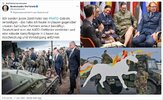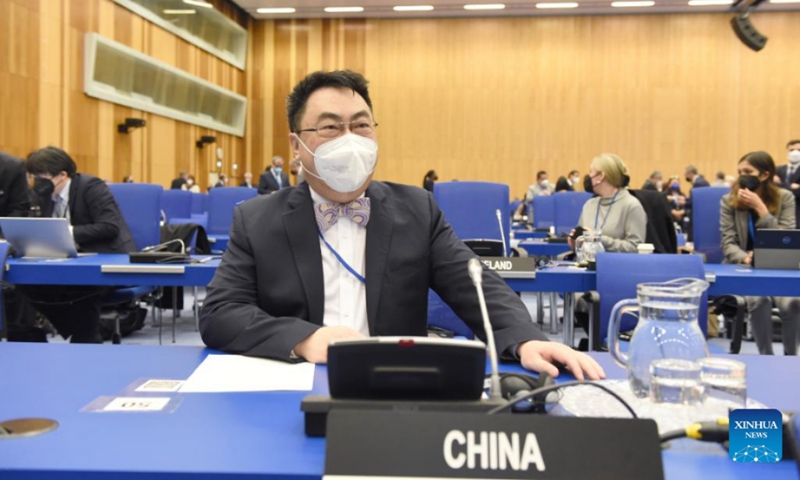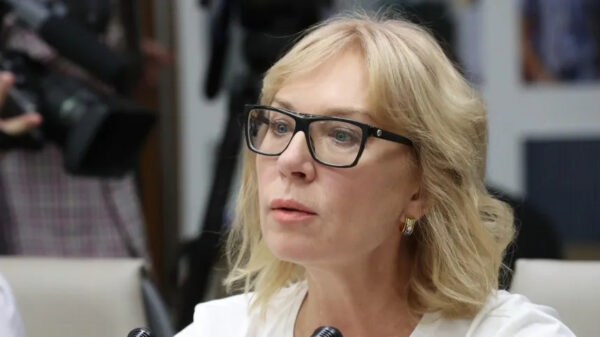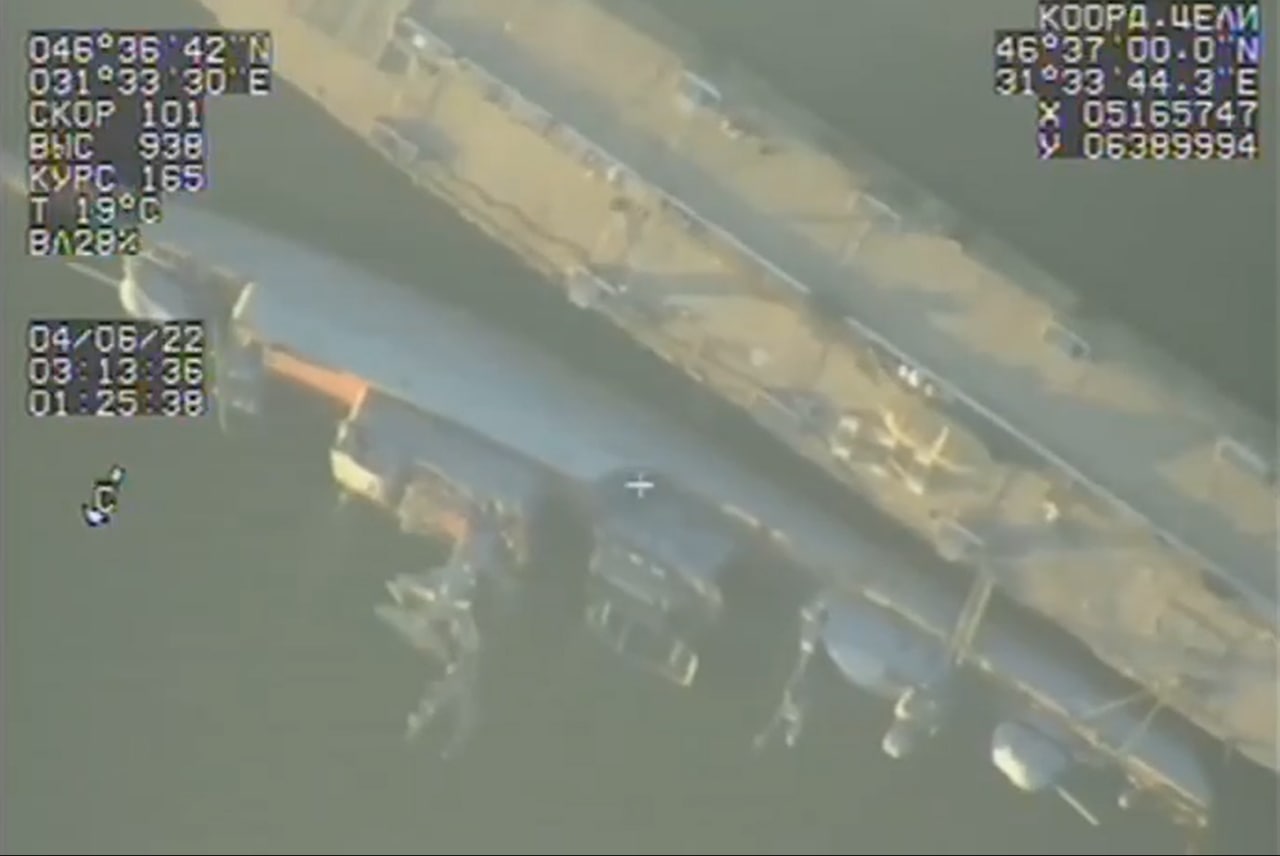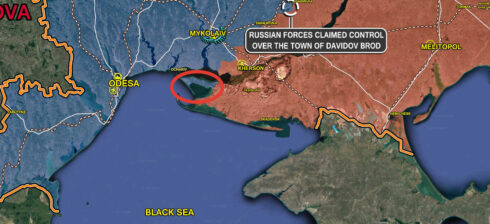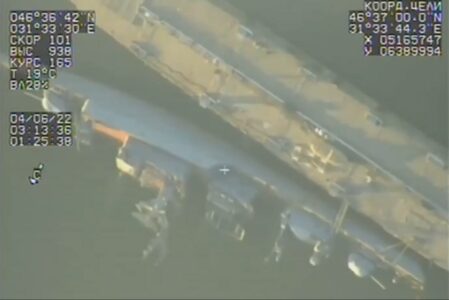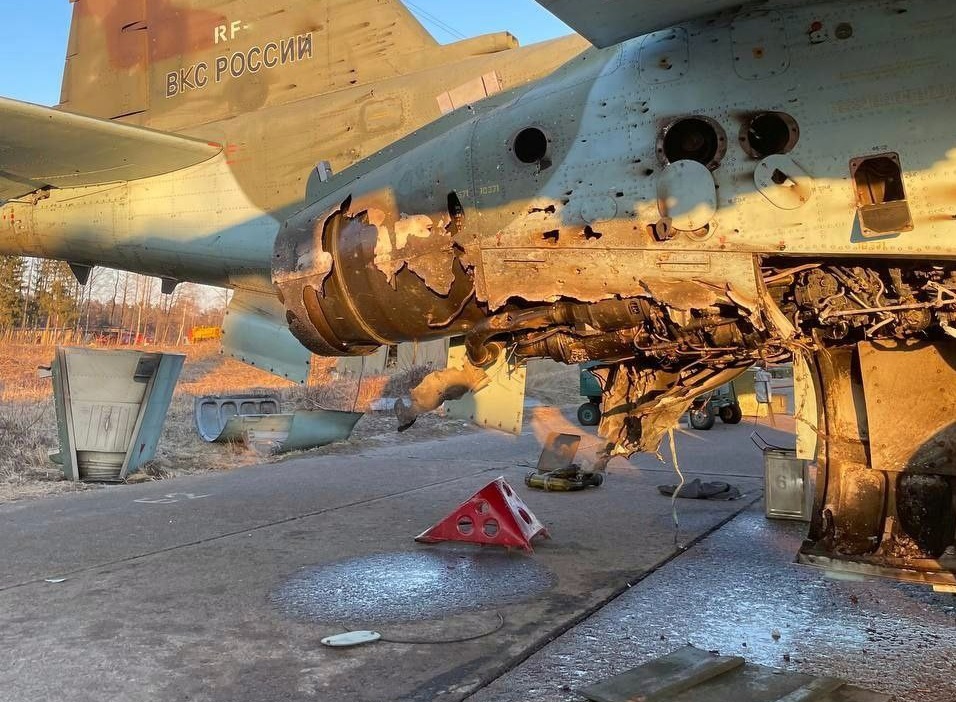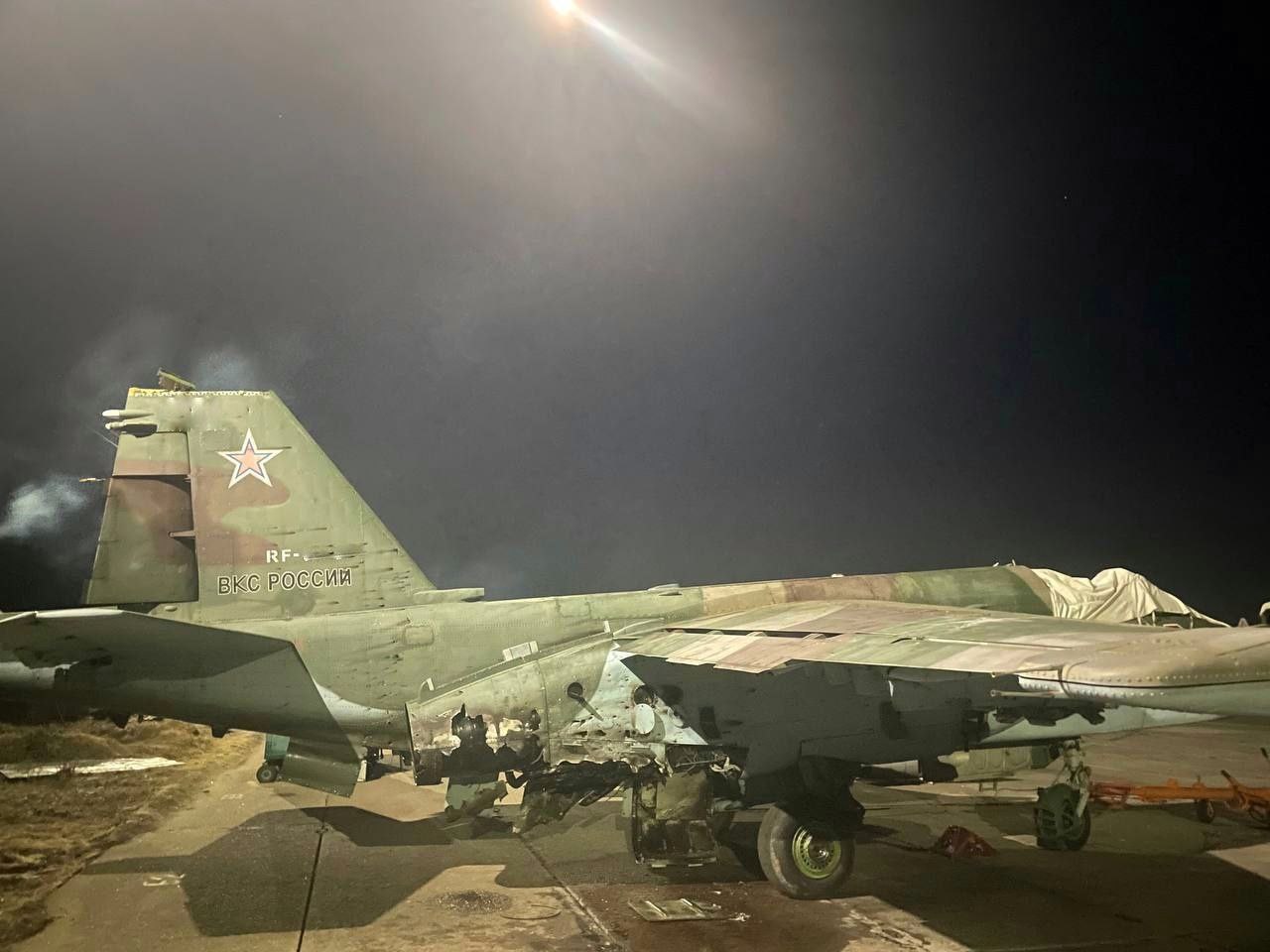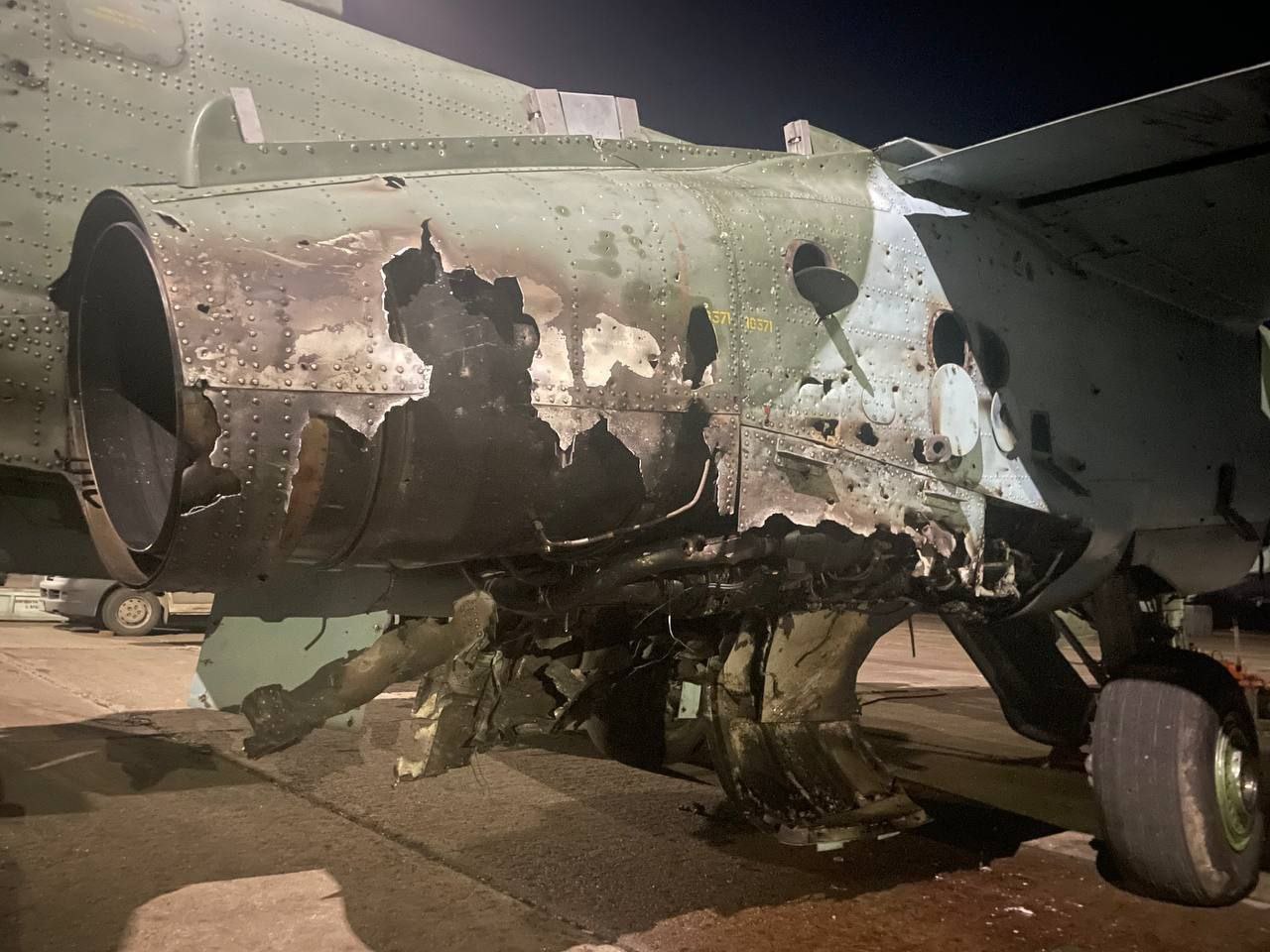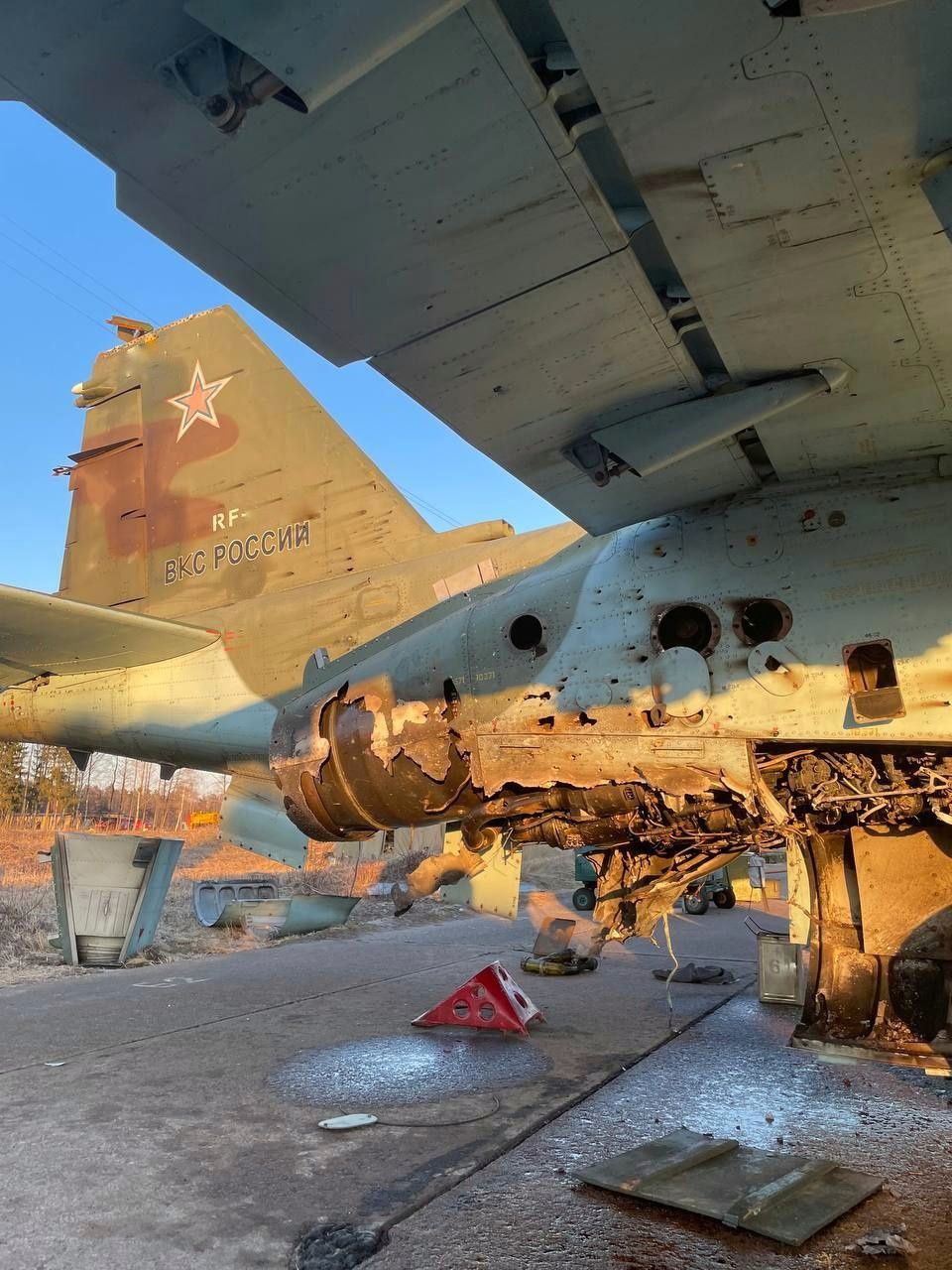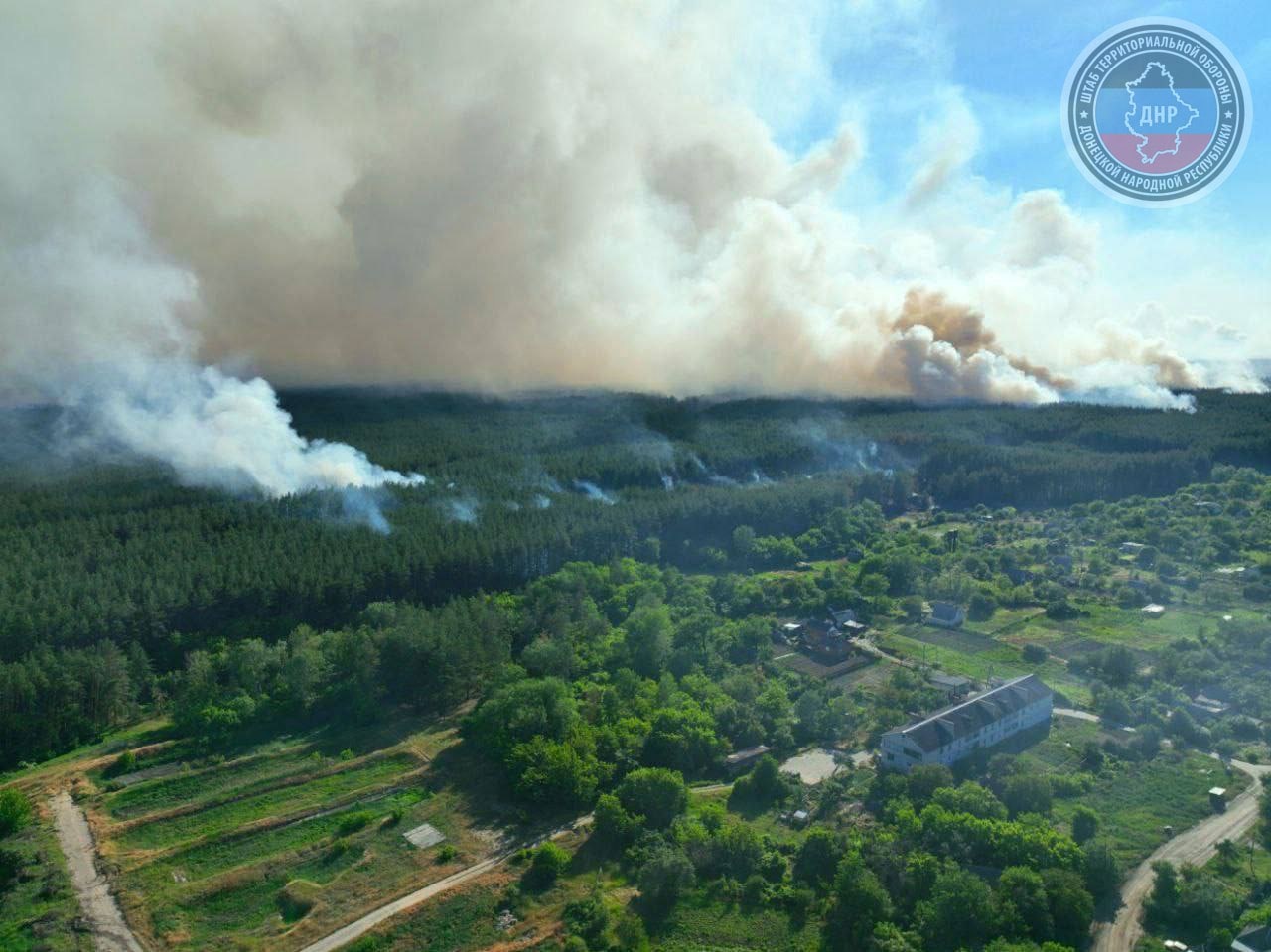Benjamin
The Living Force
'Peaceful facilities'. Of course. The facility is just a building. People kill people, not the gun.
This is the "Fact Sheet" from the first link above, jic. I've only skimmed parts of it. I've also delinked the links.
Pentagon divulges number of US-funded biolabs in Ukraine
US insists 46 “peaceful” facilities were all about public health and safety
June 9, 2022
The US government has supported 46 facilities in Ukraine over the past 20 years, but as part of a peaceful public health project rather than to develop biological weapons, the Pentagon said on Thursday. The US military accused Russia and China of “spreading disinformation and sowing mistrust” about its efforts to rid the world of weapons of mass destruction (WMD).
This is the first time the US Department of Defense disclosed the exact number of facilities its government has supported in Ukraine, in a document titled ‘Fact Sheet on WMD Threat Reduction Efforts.’
According to the Pentagon, the US has “worked collaboratively to improve Ukraine’s biological safety, security, and disease surveillance for both human and animal health,” by providing support to “46 peaceful Ukrainian laboratories, health facilities, and disease diagnostic sites over the last two decades.” These programs have focused on “improving public health and agricultural safety measures at the nexus of nonproliferation.”
The work of these biolabs was “often” conducted in partnership with bodies like the World Health Organization (WHO) and World Organization for Animal Health (OIE), and was “consistent with international best practices and norms in publishing research results, partnering with international colleagues and multilateral organizations, and widely distributing their research and public health findings,” the Pentagon insisted.
Last month, the Russian military said only three laboratories in Ukraine had the required safety levels to do the kind of research they were engaged in. Head of the Radioactive, Chemical, and Biological Protection Forces Lieutenant General Igor Kirillov cited Ukrainian government reports to point to a series of problems at one of those facilities in Odessa, by way of example.
In a series of briefings starting in March, the Russian military has presented evidence of the Pentagon’s involvement in funding laboratories in Ukraine. In early May, Kirillov accused Kiev of launching a biological attack against the breakaway region of Lugansk and of conducting “inhumane experiments” on Ukrainian patients. Other evidence suggested attempts to weaponize drones to disperse pathogens, and attempts to destroy compromising materials after Russia sent troops into Ukraine in February.
According to Russia’s Investigative Committee, the US has poured more than $224 million into biological research in Ukraine between 2005 and early 2022. Western pharmaceutical giants, nonprofits and even the US Democratic Party were involved in the scheme, Moscow has said.
To hear the Pentagon explain it, the US had “full approval” of the Russian government to engage “thousands of former Russian biological weapons scientists to conduct peaceful biological research projects for public health purposes.” Earlier in the document, the US military points out it was trying to create “sustainable civilian employment” for scientists with “weapons-related knowledge” in order to “remove incentives to seek or accept of terrorist or other state actor employment and financing.”
US involvement with biological laboratories in Ukraine “remain peaceful efforts to improve nuclear and radiological safety and security, disease surveillance, chemical safety and security, and readiness to respond to epidemics and pandemics such as COVID-19,” the Pentagon said.
Meanwhile, it accused Russia – with the help of China – of seeking “to undermine that work by spreading disinformation and sowing mistrust in the people and institutions all over the world that contribute to WMD threat reduction.”
China has responded to Russian briefings by calling for the US to provide a “fair, objective and professional” explanation of its activities.
The Pentagon insists that Ukraine “has no nuclear, chemical, or biological weapons programs” and that the small amount of highly enriched uranium (HEU) that remains at research institutes in Kiev and Kharkov “is well below the amount needed to produce a nuclear device.”
This is the "Fact Sheet" from the first link above, jic. I've only skimmed parts of it. I've also delinked the links.
Fact Sheet on WMD Threat Reduction Efforts with Ukraine, Russia and Other Former Soviet Union Countries
June 9, 2022
The History and Accomplishments of U.S. Collaboration With the International Community to Reduce Nuclear, Chemical, and Biological Threats in Ukraine, Russia, and Other Countries of the Former Soviet Union
Achievements of this cooperation across the former Soviet Union include:
- Following the collapse of the Soviet Union, the United States, along with allies, partners, and international organizations, has led cooperative efforts to reduce legacy threats from nuclear, chemical, and biological weapons left in the Soviet Union’s successor states, including Russia. These cooperative threat reduction efforts have helped advance global peace and security, and have supported the global consensus that the world is safer when we work together to increase transparency and reduce the risks from weapons of mass destruction (WMD) programs.
- The U.S. Congress created the Nunn-Lugar Cooperative Threat Reduction (CTR) Program through the passage of the Soviet Threat Reduction Act of 1991. The CTR Program provided U.S. funding and expertise to: 1) consolidate and secure WMD and WMD-related material in a limited number of secure sites; 2) inventory and account for these weapons and materials; 3) provide safe handling and safe disposition of these weapons and materials as called for by arms control agreements; and 4) offer assistance in finding gainful employment for thousands of former Soviet scientists with expert knowledge of WMD, WMD-related materials, or their delivery systems
- The United States has provided this assistance with transparency and in cooperation with our partners, which included Russia prior to 2014, toward mutually-decided objectives, and has been reported on a regular basis.
- In addition to the Nunn-Lugar Cooperative Threat Reduction work, the Departments of Energy and State have supported nuclear, chemical, and biological threat reduction efforts, often with technical assistance from other U.S. departments and agencies. This work has occurred in collaboration with other countries, such as Canada, the European Union, Japan, Norway, the Republic of Korea, and others; multilateral organizations, and the International Science and Technology Center (ISTC); and the Science and Technology Center in Ukraine (STCU).
- Thirty years later, amidst its war of aggression against Ukraine, Russia seeks, with support from the People’s Republic of China (PRC), to undermine that work by spreading disinformation and sowing mistrust in the people and institutions all over the world that contribute to WMD threat reduction.
- This Fact Sheet provides an overview of the history of threat reduction and nonproliferation programs supported by the United States, in cooperation with countries of the former Soviet Union, including the Governments of Russia and Ukraine.
Ukraine
- Destroying 2,531 missiles, decommissioning more than 1,300 WMD delivery systems (silos, mobile launchers, submarines, and strategic bombers), upgrading security at 24 nuclear weapon storage sites, and securely moving over 600 shipments of nuclear warheads from less secure storage to more secure storage or destruction (almost all of this work in Russia).
- Ukraine’s voluntary and verifiable renunciation of nuclear weapons, with the transfer of Soviet missiles, nuclear weapons, and weapons-usable nuclear materials to Russia or destruction of such missiles, weapons, and materials, and accession to the Nuclear Non-Proliferation (NPT) as a non-nuclear-weapon State Party in December 1994.
- Joint efforts by the United States and partners working with Russia to destroy Russia’s declared chemical weapons stockpile under international verification by the Technical Secretariat of the Organization for the Prohibition of Chemical Weapons (OPCW) and ensuring that Soviet scientists with weapons-related knowledge could have sustainable civilian employment—in particular, supporting scientists to remove incentives to seek or accept of terrorist or other state actor employment and financing.
- Engagement of thousands of former Russian biological weapons scientists to conduct peaceful biological research projects for public health purposes, with the Russian government's full approval. (These types of projects were very similar to biological research projects Russia is now criticizing in other former Soviet countries.)
- Securing Russia's active approval of and collaboration, as a full member of the ISTC Governing Board until 2014, in peaceful biological research projects worth millions of dollars to advance public health with Georgia, Kazakhstan, Armenia, and other former Soviet Union countries. (The Russian government repeatedly approved, and often collaborated in, the very projects it is now criticizing.)
Ukraine Has No Nuclear Weapons Program
- Ukraine has no nuclear, chemical, or biological weapons programs. On March 11 and 18, 2022, United Nations (UN) High Representative for Disarmament Affairs Izumi Nakamitsu similarly stated that the UN is not aware of any biological weapons programs in Ukraine. Those comments were reiterated on May 13, 2022, by the UN Deputy High Representative for Disarmament Affairs.
- Today, the collaborations in Ukraine remain peaceful efforts to improve nuclear and radiological safety and security, disease surveillance, chemical safety and security, and readiness to respond to epidemics and pandemics such as COVID-19.
- Many of these collaborations are multilateral and involve the G7-led Global Partnership Against the Spread of Weapons and Materials of Mass Destruction, the International Atomic Energy Agency (IAEA), the World Health Organization (WHO), the OPCW, and other UN specialized agencies.
- Ukraine has become a leader in transparency and in promoting nonproliferation and global health security norms. For example, in December 2021, Ukraine completed a voluntary, external, WHO-led evaluation ( ) of its capacity to prevent, detect, and rapidly respond to public health emergencies.
Ukraine Has No Biological Weapons Program
- During the Cold War, the Soviet military stationed a sizable number of nuclear weapons in Ukraine, believed to be around 1,800 nuclear warheads as well as strategic bombers and nuclear-armed intercontinental ballistic missiles (ICBMs). There were also several locations in Ukraine where Soviet tactical nuclear weapons were stored. After the collapse of the Soviet Union, Russia retained control of these weapons under the aegis of the Commonwealth of Independent States.
- Ukraine assumed obligations under the Strategic Arms Reduction Treaty (START I) in 1992 as a successor state to the Soviet Union, and in 1994 joined the Treaty on Non-Proliferation of Nuclear Weapons (NPT) as a non-nuclear-weapon State Party, renouncing the Soviet legacy nuclear weapons that had been deployed or stored in Ukraine.
- The transfer of all nuclear weapons from Ukraine to the Russian Federation was completed by 1996, in return for reactor fuel for peaceful uses and security assurances from Russia, the United States, and the United Kingdom as set forth in the 1994 Budapest Memorandum. All ICBMs were dismantled or removed from Ukraine, and all nuclear missile silos in Ukraine were destroyed.
- As a Non-Nuclear Weapon State Party to the NPT, Ukraine has upheld its obligation not to manufacture or otherwise acquire nuclear weapons or to seek or receive assistance in their manufacture. Ukraine also has met its NPT obligation to accept IAEA safeguards on all nuclear material in the country, and in addition has in force an Additional Protocol to its NPT-required safeguards agreement to enable the IAEA to provide credible assurances to the international community that all nuclear material in Ukraine remains in peaceful activities. The IAEA has repeatedly stated that it has found no indication that would give rise to a proliferation concern in Ukraine.
- In a further demonstration of Ukraine’s dedication to nuclear nonproliferation, at the 2010 Nuclear Security Summit hosted by the United States, Ukraine voluntarily pledged to remove its highly enriched uranium (HEU).
- Through the U.S. Department of Energy’s National Nuclear Security Administration (NNSA) efforts, 234 kg of Ukraine’s HEU was repatriated to Russia, the original exporter of this material. The material was then down-blended to low enriched uranium (LEU). In exchange for eliminating this HEU inventory, NNSA provided LEU fuel for the research reactor at the Kyiv Institute for Nuclear Research and supported the development and construction of the Neutron Source Facility at the Kharkiv Institute of Physics and Technology, with both facilities being used for peaceful purposes.
- The very small quantity of HEU that remains in Ukraine is intended for specific scientific purposes, such as nuclear forensics, and is well below the amount needed to produce a nuclear device. Ukraine does not possess uranium enrichment or spent fuel reprocessing capabilities, nor does it possess substantial quantities of separated plutonium.
- Ukraine has consistently stated that it has no intention of acquiring nuclear weapons and has consistently supported other key elements of international nonproliferation regimes, such as the Nuclear Suppliers Group, the Zangger Committee, the Wassenaar Arrangement, the Australia Group, and the Missile Technology Control Regime. Further, Ukraine has signed and ratified the Comprehensive Nuclear-Test-Ban Treaty.
Ukraine Has No Chemical Weapons Program
- At the time of its dissolution in 1991, the Soviet Union, despite being a State Party to the Biological Weapons Convention (BWC), had a large and sophisticated biological weapons program, consisting of dozens of research, development, and production facilities, with tens of thousands of employees, spread across many of its successor states.
- In violation of the BWC, this Soviet weapons complex developed a broad range of biological pathogens for use as weapons against plants, animals, and humans, including the weaponization of anthrax, plague, and smallpox.
- In contrast, no other European state nor the United States possessed any biological weapon development programs, in compliance with their obligations under the BWC. When the Soviet Union dissolved, it left some newly independent states, like Kazakhstan and Uzbekistan, with legacy biological weapons program facilities, equipment, and materials that were vulnerable to theft, misuse, and unsafe handling and storage. The U.S. Departments of Defense and State funded programs to help transition such former Soviet weapons facilities into peaceful public health facilities. ( )
- The United States, through international collaboration, has also worked to address other biological threats throughout the former Soviet Union. Subject matter experts in biology, biodefense, public health, and related fields were engaged from across the U.S. government. These efforts advanced disease surveillance and enhanced peaceful biological research cooperation between former Soviet Union scientists and the global scientific community, consistent with international norms for safety, security, nonproliferation, and transparency.
- The United States has also worked collaboratively to improve Ukraine’s biological safety, security, and disease surveillance for both human and animal health, providing support to 46 peaceful Ukrainian laboratories, health facilities, and disease diagnostic sites over the last two decades. The collaborative programs have focused on improving public health and agricultural safety measures at the nexus of nonproliferation.
- This work, often conducted in partnership with outside organizations, such as the WHO and the World Organization for Animal Health (OIE), has resulted in safer and more effective disease surveillance and detection. Ukrainian scientists have acted consistent with international best practices and norms in publishing research results, partnering with international colleagues and multilateral organizations, and widely distributing their research and public health findings.
- Ukraine owns and operates its public health laboratories and associated infrastructure, and the United States is proud to collaborate, cooperate, and provide assistance in support of this infrastructure. These facilities operate just like other state or local public health and research laboratories around the world. Furthermore, all equipment and training provided by the United States is subject to U.S. export control processes, audits, and acquisition laws and regulations, which ensures transparency and compliance with domestic and international laws.
- This assistance has directly and measurably improved Ukraine’s preparedness and response efforts to detect and report outbreaks, including COVID-19 response, and has helped protect its food supply in addition to many other benefits that accrued from this partnership.
- Ukraine has been a respected member of the Organization for the Prohibition of Chemical Weapons (OPCW) since ratifying the Chemical Weapons Convention (CWC) in 1998.
- Ukraine has consistently demonstrated its commitment to uphold the international norm against the use of chemical weapons, including through its participation at the OPCW and its implementation of its obligations under the CWC.
- Ukraine regularly plays an active role at the OPCW Conference of the States Parties and was most recently a member of the OPCW Executive Council from 2018 to 2020. Ukraine previously held a number of leadership roles at the OPCW, to include chairing the Executive Council from 2012 to 2014.
- The United States has been clear since ratifying the CWC in 1997 that it will never under any circumstances develop, produce, otherwise acquire, stockpile or retain chemical weapons, or transfer, direct or indirectly, chemical weapons to anyone; use chemical weapons; engage in any military preparations to use chemical weapons; or assist encourage or induce, in any way, anyone to engage in any activity prohibited to a state party under the CWC.
- The United States is committed to the destruction of all chemical weapons around the world and has provided substantial aid and support to numerous countries in the destruction of their chemical weapons, including Russia and Syria.
Last edited:




